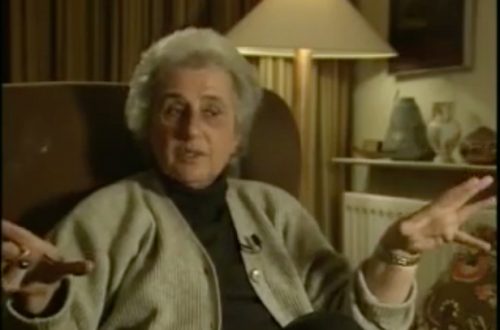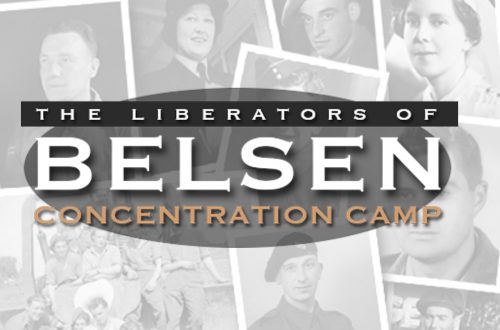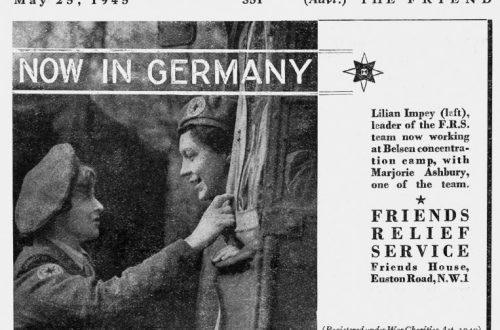Tom Scholes (58th LAA)
Tom Scholes was called up for 6 months in the First Militia, aged 21, on 17 July 1939. Those 6 months lasted some six and half years!
 Tom reported to Oswestry in Cheshire where he stayed for about 2 months for his initial training. On transfer to Bawdon, near Aldershot, he was taught to drive and joined a Scottish Regiment, The Argyle and Sutherland Highlanders, in order to make their numbers up to full strength. With further training, they were classified as the 58th Light Anti-Aircraft Regiment with duties from dawn to dusk on gun sites in Portsmouth.
Tom reported to Oswestry in Cheshire where he stayed for about 2 months for his initial training. On transfer to Bawdon, near Aldershot, he was taught to drive and joined a Scottish Regiment, The Argyle and Sutherland Highlanders, in order to make their numbers up to full strength. With further training, they were classified as the 58th Light Anti-Aircraft Regiment with duties from dawn to dusk on gun sites in Portsmouth.
The Early Days: France 1940
In 1940, the Tom’s Regiment sailed from Tilbury to Le Havre in France as part of the British Expeditionary Force. At that time, Tom drove 15 cwt trucks which, strangely, had been specially conditioned for desert use. They spent 2 or 3 weeks at a farm near Rouen which was like a holiday compared to what lay ahead. Then, they moved to gun sites at Boulogne, about 6 miles from 174 Battery Headquarters at Wimereux. Just about this time, the Germans had broken through British Lines so driver and trucks were hurriedly sent to pick up gun teams from an airfield already under shellfire. This proved to be a very hazardous but, ultimately, successful trip with lots of troops rescued.
Under Attack
Upon their return, they were transferred to a heavy Ack-Ack unit (Anti-Aircraft) on the cliffs between Boulogne and Wimereux. Again, this area came under heavy shellfire. Most of the tanks were set on fire, but the troops were reasonably safe in dugouts. As the bombardment increased, it caused total confusion. At one point, Tom saw the Sergeant forced to slap a solider to break his rising panic attack. Not long after, the Sergeant shouted, “Let’s get the hell out of here”. About 20 soldiers decided to walk along the cliffs back to Wimereux. Little did they know that they would come under ‘friendly fire’ from the Royal Navy destroyers firing over their heads and, not one, but two Spitfires mistaking them for German troops.
Separation from the Group
The group came across a broken down truck which they tried to get started but were rudely interrupted when 2 German tanks appeared as if from nowhere and opened fire on them. Behind the soldiers, a 7ft garden wall, part of a deserted hamlet, was the only escape and some of the 20, including Tom, headed for the wall. Amongst the shouting and screaming, sheer fear and adrenalin gave added speed and strength and six managed to throw themselves up and over the wall. Sadly, it would seem the rest of the lads were either killed or captured.
Survival: Six Down to Two
The six found their way to the basement of a house where they took stock of their position. It was thought that the infantry would be on its way, so they waited for dark and set off towards what they hoped was the direction of Calais. Eventually, four of the six could not decide which way to go on. Tom and another soldier, Tommy Davies, decided it was better to keep moving so continued on separately.
Incognito: Tom and Tommy on the Run
After a while, the stunning sight of the white cliffs of Dover appeared suddenly in view. Such a vivid image symbolising home — England felt so near and yet so far — they wondered if they would ever set foot over there again. Below, Tom and Tommy could see some small rowing boats and thought of trying to escape in them, but knew they had no chance. The next day they could see German troops on a road below the cliffs below where they were walking and could hear them singing outside a nearby hotel. German troops seemed to be everywhere but they then came to a farm and made a run for the barn. The farmer must have seen them because he quickly came out and spoke to them in a desperate attempt to get them to leave. With their very limited French, the Tommies pleaded for food as they were starving after 2 or three days on the run. Eventually, the farmer did bring them bread, cheese and milk. Later, and without being asked, he also brought them civilian clothes and begged them to leave as he was very frightened. The Tommies changed into the plain trousers, shirts and jackets and donned their authentic black berets. Their uniforms and paybooks were then quickly buried. Dressed as French labourers they were able to sit outside the farm as some German troops went by. Worried what their next move should be, they prayed no-one would speak to them.
They decided to walk back the way they had come in the hope of contacting British troops. They slept under hedges, walked through field after field and crossed rivers, some of which were quite deep and Tom could not swim. Luckily, the summer of 1940 brought some very hot weather which helped dry out their wet clothes as they walked on. They tried at each farm they passed to ask for food. A few would give some, but most would not. They were just too frightened. By good luck, one farmer invited them into his house to eat a good hot plateful of some sort of ‘hash’, his young children watching the Tommies tuck into the most welcome meal for days at their long family table. Then they were off again, with no real idea where they were.
In one place, they came to a huge chateau with a moat around. There were men and women, all in civvies, walking freely around the courtyard and chatting. The boys hid, waited and listened for some time to see if they were German. From the cars, their dress, appearance and language, Tom and Tommy decided they must be high class Belgian and decided to walk across the bridge over the moat. A man with two huge dogs came to meet them. They told him they were English soldiers and were very hungry. The man spoke very good English and immediately came back with food and drink for them.
They continued walking and eventually came to a wide river that seemed impossible to cross without being seen. Just then, a farmer happened to be crossing an adjacent bridge with his horse and cart so they pretended to be workmen and walked across with the cart, just far enough so the farmer did not notice them. Once across, they followed a dirt track and to a building where a German was on guard. All they knew was, “Bonjour”. It seemed to work because he let them pass.
Too Close For Comfort
On into fields again, always away from any roads where there was more chance of meeting Germans, they came to a place that they have since found out was Montreuil. It was a town surrounded by a moat with one bridge by which to enter so they had no alternative but to walk through the town with all the real and imagined dangers of being discovered. They took another risk by walking into a small café and asked for a café au lait. They sat at the back when 2 German Officers came in and stood at the bar, each with a beer. This caused a considerable degree of panic but, thankfully, the Officers soon left. As if this wasn’t dangerous enough, Tommy Davies was so desperate for a cigarette that, despite Tom’s strongest protests with some choice army words, Davies still went across to one of the other customers and asked for a cigarette. Fortunately, the man seemed to be French and gave Tommy some cigarettes but then told him to give himself up. The possibility of the covert presence of a member of the ‘Fifth Column’ was enough to make Tommy return to Tom and hiss under his breath, “Come on, we’re away!” They went round the back of the café, climbed over a wall and dropped down a steep bank on the other side, rolling down to the bottom and ending up in the river.
They continued to walk, through more fields and came to another river. It turned out to be the Somme, near Abbeville. A deserted farmhouse was nearby but German field guns were in the next field, shelling over the river. Despite this, the Tommies entered the farmhouse and, after checking the drawers in the kitchen, seeing they were full of new belongings, they left them as they found them. They did manage to find some sustenance by milking a cow into an old tin can.
A Dangerous but Hopeful River Crossing
The shelling direction of the Germans made the boys deduce there must be British troops across the other side of the river and, if only they could get across, they would be ‘home’. The solution came in the form of a long plank found in the farmyard which was thrown into the river and on which they paddled across, avoiding the floating debris from bombed villages further up river. As they scrambled up the bank on reaching the other side, they saw a patrol approaching. It was impossible to tell, at that moment, if they were English or German. They turned out to be neither but were a patrol from a Scottish Regiment who had to take them prisoner since they had no identification on them.
Interrogation
They were interrogated at HQ and proved who they were, naming their Officers and Regiments. Finally, the interrogating Officer said, “Give these lads a good meal”. The best the Army could provide, at that moment, was a huge loaf of bread and a big pot of jam, which promptly made them sick. At this stage, Tom estimates they had walked some 50 miles over about 3 or 4 days. Much later, they found out that they had been posted as missing and their parents had been informed.
The Evacuation and Return
All troops were then evacuated in rail cattle trucks to St Nazaire, a huge French naval harbour and submarine base, to await a boat back to England. The boat that set out ahead of them, full of troops and nurses, was under constant bombardment. It received a direct hit and sank with considerable loss of life. Tom’s boat was chased by a U-boat in the Bay of Biscay but they managed to reach Liverpool safely with hearts full of gladness. Tom and Tommy said their goodbyes but lost touch thereafter.
Between 1940 and 1944, Tom was posted to many camps and given training to become part of the 11th Armoured Division. This involved the use of a wide range of guns. Also, they were especially trained in how to waterproof their vehicles, each one taking 2 to 3 days to complete.
June 1944
On around 14th June 1944, a lad a bit older than Tom announced, “Scholesy! They’re sending us up the line again!” They then realised why it was necessary to waterproof their vehicles. The 11th Armoured Division landed in Normandy at the Mulberry Harbour, a massive row of floating barges that formed a portable landing base for tanks and other vehicles, at Arromanches. They drove in convoy to Caen where they were held up for a day or two because of heavy fighting. Then on to the Falaise Gap where nothing prepared them for the sight of the total carnage they were met with. Dead and dying Germans and their horses were everywhere. The stench was so dreadful it lingered for days in their camouflage nets.
The next move was north towards Belgium, in a desperate effort to get to the “Doodle Bugs” which were causing such havoc and demoralisation killing civilians back in England.
Belsen Concentration Camp
In 1945, an Officer selected Tom and 3 others to follow him with their trucks that towed water carriers. They had no idea where they were going but, eventually, they arrived at Belsen Concentration Camp. The first impact was the appalling smell that could be detected miles before entering the camp. The sight was too dreadful to behold. There were piles of dead bodies, walking skeletons and the over-bearing smell that can only be described as death and decay. The visit lasted about 4 hours, during which time all they could do was leave some water at the Medical Core. They saw the Camp Commandant, Josef Kramer, and Irma Grese who were both later executed for the crimes committed.
For a short time after, the unit was taken out of service but was quickly brought back again, as the Germans broke through Ardennes. The next move was up into Holland where it was freezing cold as the winter weather of 1945 approached. The soldiers had no further supplies of warm clothing than the kit which they had worn in the French summer. Once the Arnhem Bridge was taken, the division was moved up to Lubeck port.
The Perfect Combination: Armistice and a Cracking Football Match
Soon after this, in 1945, the Armistice was signed and the Regiment was sent to Sylt Island, a submarine base off the coast of Denmark. Tom was on the Regimental football team and one of the teams he played against was a Polish Army team. Tom still has the programme for the match, dated 5th October 1945, which lists all the players from both teams. Following demob on Sylt, they were driven to the Hook of Holland for the journey home.
Tom’s Discharge Documents state that his military conduct was ‘Exemplary’.
Epilogue
For some time after demob, Tom had nightmares. He would be ‘running’ in bed and shouting “Get down! Get down! They’re coming!” He would wake up drenched in sweat. Fortunately, these nightmares eventually ceased.
7,889 total views



